pulse thc instructions
Welcome to the comprehensive guide on Pulse THC instructions. This guide will help you understand THC basics‚ measure pulse effectively‚ and consider health implications for safe use.
Overview of Pulse THC and Its Importance
Pulse THC is a crucial tool for understanding and measuring THC levels‚ ensuring safe and effective use. It helps users monitor their intake‚ avoid overconsumption‚ and recognize potential health risks. By providing clear guidelines‚ Pulse THC supports both recreational and medical users in achieving balanced consumption. Its importance lies in promoting awareness and responsible use‚ minimizing adverse effects like Autistic Burnout or impaired performance.
Understanding the Basics of THC and Pulse Measurement
THC (tetrahydrocannabinol) is the primary psychoactive compound in cannabis. Pulse measurement monitors heart rate‚ crucial for assessing THC effects. Understanding both helps users track physiological responses‚ enabling informed decisions. This combination supports health monitoring‚ exercise planning‚ and safe consumption practices‚ especially for those sensitive to THC-induced heart rate changes. Accurate measurement ensures balanced use‚ reducing risks like Autistic Burnout or performance impairment.
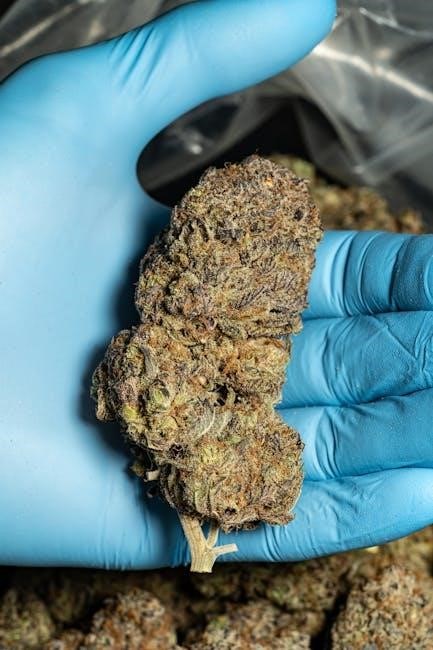
What is Pulse THC?
Pulse THC refers to the measurement of THC effects on heart rate‚ providing insights into physiological responses and aiding in safe consumption and monitoring practices.
Definition and Functionality
Pulse THC refers to the measurement and monitoring of THC’s effects on heart rate and pulse. This system helps users understand how THC impacts their cardiovascular system‚ enabling safer consumption practices. By tracking pulse patterns‚ individuals can assess tolerance levels and adjust dosages accordingly. The functionality involves using devices or methods to monitor heart rate changes‚ providing real-time feedback for personalized THC experiences and health monitoring.
Components and Design Features
Pulse THC devices typically include a compact design with an LED screen‚ USB-C charging port‚ and multiple operational modes. The system features advanced sensors to monitor heart rate and THC effects in real-time. Its portability and user-friendly interface make it ideal for personal use. The device often includes adjustable settings to customize experiences‚ ensuring precise monitoring and control over THC-induced physiological responses.
Health Considerations for THC Use
Understanding VPD and recognizing Autistic Burnout are crucial. THC can cause a weak pulse and other health issues‚ emphasizing the need for careful use and monitoring.
Understanding VPD and Its Impact on Plants
VPD (Vapor Pressure Deficit) is crucial for plant health‚ affecting growth and development. Proper VPD management ensures optimal water uptake and nutrient absorption‚ preventing stress. Monitoring temperature and humidity helps maintain balanced conditions‚ essential for healthy plant performance and maximizing THC yields. Incorrect VPD levels can lead to issues like reduced growth or nutrient deficiencies‚ impacting overall plant productivity and quality.
Recognizing Autistic Burnout in Users
Autistic burnout is a state of physical‚ mental‚ and emotional exhaustion‚ often linked to prolonged stress or sensory overload. Users may exhibit reduced responsiveness‚ increased sensitivity‚ and difficulty with daily tasks. Early recognition involves identifying these signs and providing supportive environments. Managing burnout requires understanding triggers and implementing coping strategies to ensure well-being and recovery.
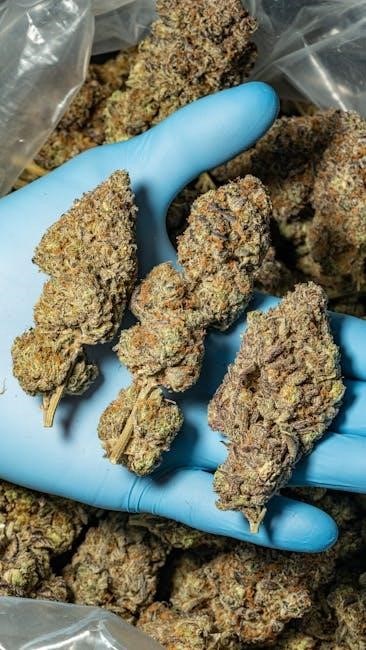
How to Use Pulse THC
To use Pulse THC‚ start by preparing the device according to the manufacturer’s instructions. Ensure proper setup‚ then follow step-by-step guidance for optimal performance and safety.
Step-by-Step Guide to Operating the Device
To operate the Pulse THC device‚ start by ensuring it is fully charged using the USB-C port. Remove the protective plug from the mouthpiece and adjust the bottom tab to your preferred setting. Turn on the device and select your desired mode (off‚ normal‚ or pulse). Take steady draws while monitoring the LED screen for charge levels and usage indicators. Always follow safety guidelines and store the device properly after use to maintain functionality. Regular cleaning and maintenance are recommended for optimal performance.
Preparation and Maintenance Tips
Before using the Pulse THC device‚ ensure it is fully charged and free from blockages. Regularly clean the mouthpiece and internal components with isopropyl alcohol to prevent residue buildup. Store the device in a cool‚ dry place to maintain functionality. For optimal performance‚ check and replace worn-out parts as needed. Always follow the manufacturer’s guidelines for care and maintenance to extend the device’s lifespan.
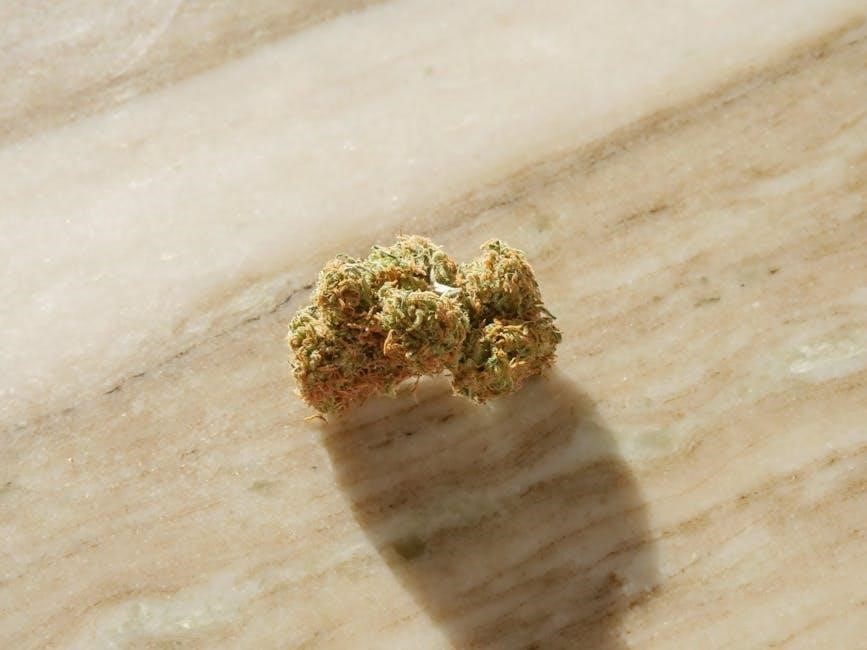
Measuring THC Levels and Implications
Measuring THC levels involves blood or saliva tests‚ though both are criticized for accuracy. THC impairment is hard to determine from test results‚ complicating assessments.
Methods for Measuring Marijuana Use in Drivers
Measuring marijuana use in drivers typically involves blood or saliva tests. Blood tests detect THC levels‚ while saliva tests identify recent use. Both methods have limitations in accuracy and reliability‚ making it challenging to determine impairment levels. These tests are often used by law enforcement to assess driver fitness but face criticism for not directly correlating to impairment.
Challenges in Determining Impairment Levels
Determining impairment levels from THC use is challenging due to its unique properties. Unlike alcohol‚ THC’s effects vary widely among individuals‚ making it difficult to establish a universal standard. Blood and saliva tests detect THC presence but don’t directly correlate to impairment. Factors like tolerance‚ metabolism‚ and individual reactions further complicate accurate assessment‚ leading to ongoing debates and research in the field.
Comparisons with Other Cannabis Products
Pulse THC differs from other cannabis products in its high-THC concentration and unique effects. Unlike Type I products‚ it offers distinct benefits‚ making it a preferred choice for specific needs.
Differences Between Type I and High-THC Products
Type I cannabis products are defined by their high THC content and minimal CBD levels‚ offering potent psychoactive effects. In contrast‚ high-THC products are designed for specific user needs‚ such as intense relaxation or pain relief. While Type I products cater to recreational users seeking strong effects‚ high-THC products often target therapeutic benefits. Understanding these differences is crucial for selecting the right product for individual preferences and requirements.
Evaluating Exercise Performance with THC Use
THC can influence exercise performance by altering heart rate and perception of exertion. Studies suggest THC may increase heart rate during physical activity‚ potentially affecting endurance. However‚ effects vary based on individual tolerance and dosage. Some users report enhanced focus‚ while others experience decreased coordination. Monitoring pulse and physical responses is crucial to maintain optimal exercise intensity and safety while using THC.

Troubleshooting Common Issues
Identifying and addressing issues like weak pulse or device malfunctions is crucial. Use monitoring devices to detect irregularities and seek medical help if symptoms persist or worsen.
Addressing Weak or Absent Pulse Symptoms
A weak or absent pulse can indicate serious health issues‚ such as shock or arrhythmia. To address this‚ check pulse points at the wrist or neck. If symptoms persist‚ seek immediate medical attention. Regular device checks and proper THC usage practices can help prevent such conditions. Monitoring heart rate and understanding VPD are crucial for maintaining overall health and safety while using THC products.
Emergency Treatment and Response
In case of a THC-related emergency‚ assess vital signs and ensure the person is breathing. If unresponsive‚ begin CPR if trained. Do not leave the individual alone and seek immediate medical help. Emergency services should be contacted promptly‚ especially if pulse is weak or absent. Provide first aid and monitor until professional assistance arrives. Always prioritize health and safety in such critical situations.
Effects of THC on Pulse and Heart Rate
THC can increase heart rate and pulse‚ particularly during exercise. Monitoring heart rate helps assess exercise intensity and ensures safety while using THC products responsibly.
How THC Affects Heart Rate During Exercise
THC can significantly increase heart rate during physical activity‚ potentially elevating exercise intensity. Monitoring pulse rates helps users assess physiological responses and adjust routines for safety and optimal performance.
Monitoring Heart Rate for Exercise Programs
Regular heart rate monitoring during exercise is crucial‚ especially when using THC. It helps maintain safe intensity levels‚ preventing overexertion. Tracking pulse allows users to balance physical activity with THC-induced cardiovascular effects‚ ensuring a healthier workout experience.
Legal and Medical Implications
Understanding legal regulations and medical guidelines is essential for safe THC use‚ ensuring compliance with local laws and addressing potential health risks effectively.
Cannabis Legalization and Use Regulations
Understanding cannabis legalization and use regulations is crucial for compliance. Laws vary by region‚ with some areas permitting medical or recreational use while others restrict it entirely. THC levels in products are often regulated‚ and impairment testing methods remain controversial. Stay informed about local laws to ensure legal and safe use of cannabis products‚ avoiding potential legal consequences.
Clinical Pharmacology and Therapeutic Uses
THC exhibits therapeutic potential in pain relief‚ nausea reduction‚ and appetite stimulation. Its pharmacology involves cannabinoid receptors‚ influencing various physiological processes. Clinical studies highlight benefits for chronic conditions‚ though dosage and administration methods require careful consideration. Pulse monitoring can aid in assessing tolerance and optimizing treatment regimens for medical cannabis patients‚ ensuring safe and effective therapeutic outcomes.

Impact on Exercise and Athletic Performance
THC can influence heart rate and exercise performance‚ potentially enhancing focus but reducing endurance. Monitoring pulse helps assess its effects on athletic capabilities and physical stamina.
Effects of THC on Athletic Performance
THC can enhance focus and reduce pain during exercise but may impair endurance and coordination. Its effects vary‚ with some experiencing improved performance‚ while others face decreased stamina and reaction times. Monitoring pulse and heart rate is crucial to assess how THC influences physical exertion and overall athletic capabilities.
Role of Pulse in Determining Exercise Intensity
Monitoring pulse helps set exercise intensity levels by tracking heart rate during physical activity. A healthy adult heart rate typically ranges from 60 to 100 beats per minute at rest. Knowing your pulse allows you to adjust workouts‚ optimize performance‚ and ensure safety‚ especially when considering THC’s effects on heart rate and overall exercise capacity.
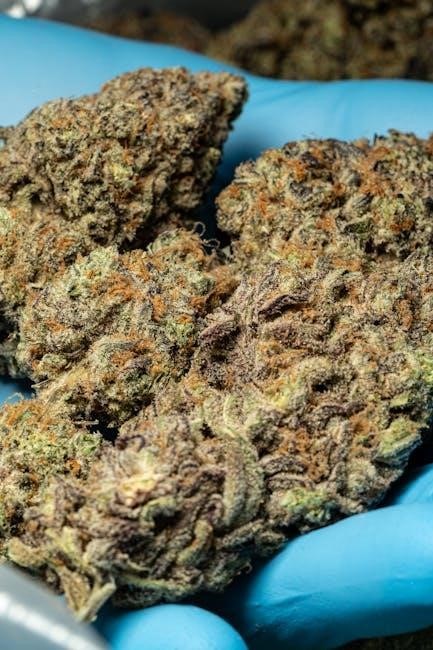
Long-Term Effects and Considerations
Chronic THC use may lead to cardiovascular issues and dependency. Long-term impacts on mental health and cognitive function are also potential concerns. Monitoring pulse and heart rate is essential for assessing overall health and safety during extended use. Consult a healthcare professional for personalized advice on safe and therapeutic THC use.
Negative Health Consequences of Chronic Use
Chronic THC use can lead to cardiovascular issues‚ such as increased heart rate and blood pressure‚ potentially causing long-term damage. Mental health concerns‚ including anxiety and cognitive impairment‚ may arise. Prolonged use can also affect lung health and immune function. Monitoring pulse and heart rate is crucial to assess these risks. Consulting a healthcare professional is essential to mitigate adverse effects and ensure safe usage practices.
Therapeutic Uses and Potential Benefits
THC has shown promise in alleviating chronic pain‚ reducing nausea‚ and managing anxiety or depression in controlled doses. It may also aid sleep disorders and improve appetite. Additionally‚ THC’s neuroprotective and anti-inflammatory properties could benefit conditions like multiple sclerosis or epilepsy; Monitoring pulse and heart rate helps optimize therapeutic dosing‚ ensuring safe and effective treatment plans tailored to individual needs.

CBD vs. THC: Key Differences
THC is psychoactive‚ causing euphoria‚ while CBD is non-psychoactive‚ offering relaxation. Both interact with the endocannabinoid system but differ in effects and therapeutic applications‚ with THC targeting pain and anxiety‚ and CBD focusing on inflammation and calmness without the high.
Understanding Cannabinoid Profiles
Cannabinoid profiles refer to the specific composition of THC and CBD in cannabis products. THC primarily binds to CB1 receptors‚ inducing psychoactive effects‚ while CBD interacts with CB2 receptors‚ promoting relaxation without euphoria. Understanding these profiles is crucial for tailoring therapeutic benefits and managing potential side effects‚ ensuring safe and effective use based on individual needs and health conditions.
Implications for Medical Use and Treatment
THC and CBD have distinct medical implications. THC is often used for pain relief and appetite stimulation‚ while CBD may reduce inflammation and anxiety. Clinicians consider cannabinoid profiles to tailor treatments‚ ensuring efficacy and minimizing side effects. This targeted approach enhances therapeutic outcomes‚ making cannabis a versatile option for various medical conditions‚ supported by ongoing research and clinical trials.
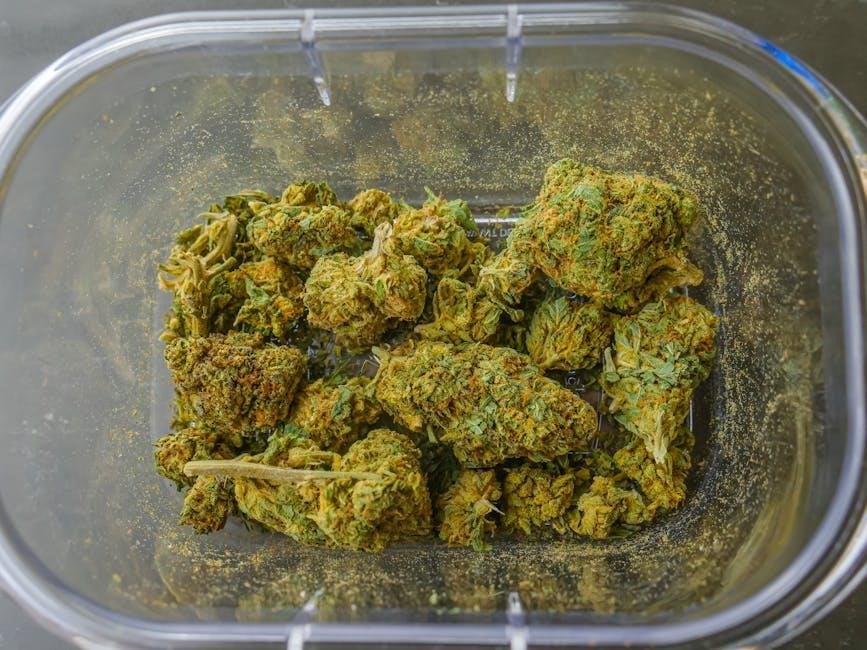
Emergency Response and First Aid
In case of THC-related emergencies‚ assess vital signs and ensure breathing. If unresponsive‚ call emergency services immediately. Monitor until professional help arrives.
- Stay calm and provide a safe environment.
- Check for breathing and pulse regularly.
- Do not leave the person unattended.
Assessing and Responding to THC-Related Emergencies
In THC-related emergencies‚ prioritize assessing vital signs‚ including pulse and breathing. If the individual is unresponsive‚ call emergency services immediately. Monitor their condition closely until professional help arrives. Ensure the environment is safe and calm to prevent further complications. Provide clear information to responders about the situation and any known THC usage details.
When to Seek Medical Attention
Seek immediate medical attention if THC use leads to severe symptoms‚ such as a weak or absent pulse‚ difficulty breathing‚ or chest pain. Monitor vital signs closely and provide detailed information to healthcare providers about THC usage and any pre-existing conditions. Timely intervention is crucial for addressing potential complications and ensuring proper treatment.

Future Trends in THC Research
Emerging studies explore THC’s impact on human performance‚ while advancements in delivery systems aim to enhance therapeutic benefits and minimize side effects.
Emerging Studies on THC and Human Performance
Research investigates THC’s effects on exercise‚ revealing both enhanced focus and reduced physical stamina. Studies explore optimal dosing for performance without impairment‚ focusing on recovery and pain management. Scientists are examining how THC interacts with the body during physical activity‚ aiming to balance benefits and drawbacks for athletes and individuals seeking improved wellness outcomes.
Technological Advances in THC Delivery Systems
Recent advancements in THC delivery systems‚ such as vaporizers and transdermal patches‚ offer precise dosing and controlled release. Innovations like temperature-controlled devices and app-connected pens enable users to monitor intake and optimize effects. These technologies aim to enhance safety‚ efficiency‚ and user experience‚ catering to both recreational and medical use while ensuring consistent and predictable outcomes for individuals seeking tailored THC delivery solutions.
Thank you for exploring Pulse THC instructions. This guide has covered key aspects of THC use‚ measurement‚ and health considerations. Always prioritize safe and informed practices for optimal results.
Summarizing Key Points
This guide has provided a detailed overview of Pulse THC instructions‚ covering THC basics‚ VPD‚ health considerations‚ and measurement methods. Key takeaways include understanding THC’s impact on pulse‚ recognizing burnout‚ and adhering to safety practices. Always consult medical professionals for personalized advice and ensure legal compliance when using THC products. Safe and informed use is essential for maximizing benefits while minimizing risks.


